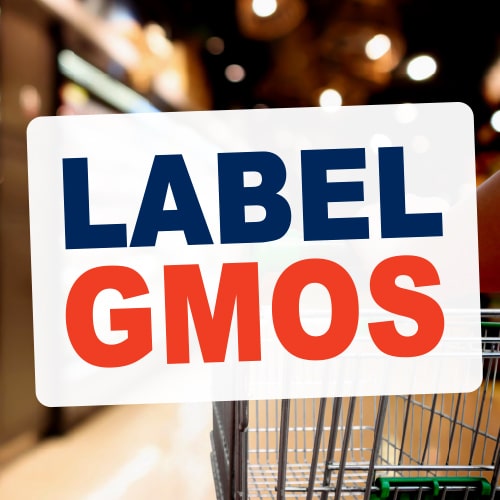FAQs (Frequently Asked Questions)
What are genetically modified organisms (GMOs)?
Genetically modified organisms (GMOs) are living organisms that have been genetically modified (genetically engineered) in the laboratory to have new characteristics.
Genetic engineering directly changes the genetic makeup (DNA) of an organism, bypassing normal plant or animal reproduction. Genetic engineering includes techniques that make changes to DNA by inserting genetic material from the same, similar, or totally unrelated organisms and it includes gene editing techniques that can be used to delete genes. To learn more, click here.
What are new gene-edited GMOs?
New gene-edited GMOs are made with the new genetic engineering techniques called genome editing (gene editing) that include CRISPR. Gene editing techniques introduce genetic material that acts as an “editor” to change DNA. These techniques aim to insert, delete or otherwise change a DNA sequence at a specific, targeted site in the genome. (The genome is the entire set of genetic material in an organism, including DNA.) Gene editing can create GMOs that are not transgenic i.e. do not have DNA from other species.
Read CBAN’s two-page factsheet “Gene-edited foods are GMOs.”
What new GMOs could be introduced to the market?
Read our new report Gene-Edited Fruits and Vegetables: The Threat of New GMOs in Canada, released October 1, 2025. There are three new genetically engineered (genetically modified or GM) fruits and vegetables that could come to market in Canada soon: GM mustard greens for salad mix, GM strawberries, and GM purple tomatoes. The new genetic engineering techniques of gene-editing could mean a flood of other new GMO fruits and vegetables coming to market in the future.
Why do we need to act now to Protect our Produce from New GMOs?
No labelling: There is no mandatory labelling of genetically modified foods in Canada despite intensive public campaigning and 20 years of polling that consistently shows over 80% of people living in Canada want these labels. In addition, many new gene-edited GMOs can be put on the market without even notifying the government.
No government safety assessments: The Canadian government has removed regulation for most gene edited plants and foods. This means that many gene edited foods, such as Bayer’s GM salad greens, can enter our food system and environment without any government safety assessments or independent science. There is no government approval process and no government oversight for these new GMOs. Corporations can assess the safety of their own products.
A threat to food sovereignty, biodiversity and farmers: New genetically modified fruits and vegetables mean increased corporate control over seed varieties. Six companies now control 58% of the global commercial seed market. GM seeds put non-GMO plants at risk of contamination, threatening the tradition of seed-saving and the preservation of heritage seeds. GM contamination also threatens organic farmers’ livelihoods because organics prohibits the use of GMOs.
What action can I take to Protect our Produce from new GMOs?
If you are a retailer, pledge to a non-GMO produce section. Return to the Protect Our Produce page or email outreach@cban.ca to learn more about the pledge or to ask any questions.





